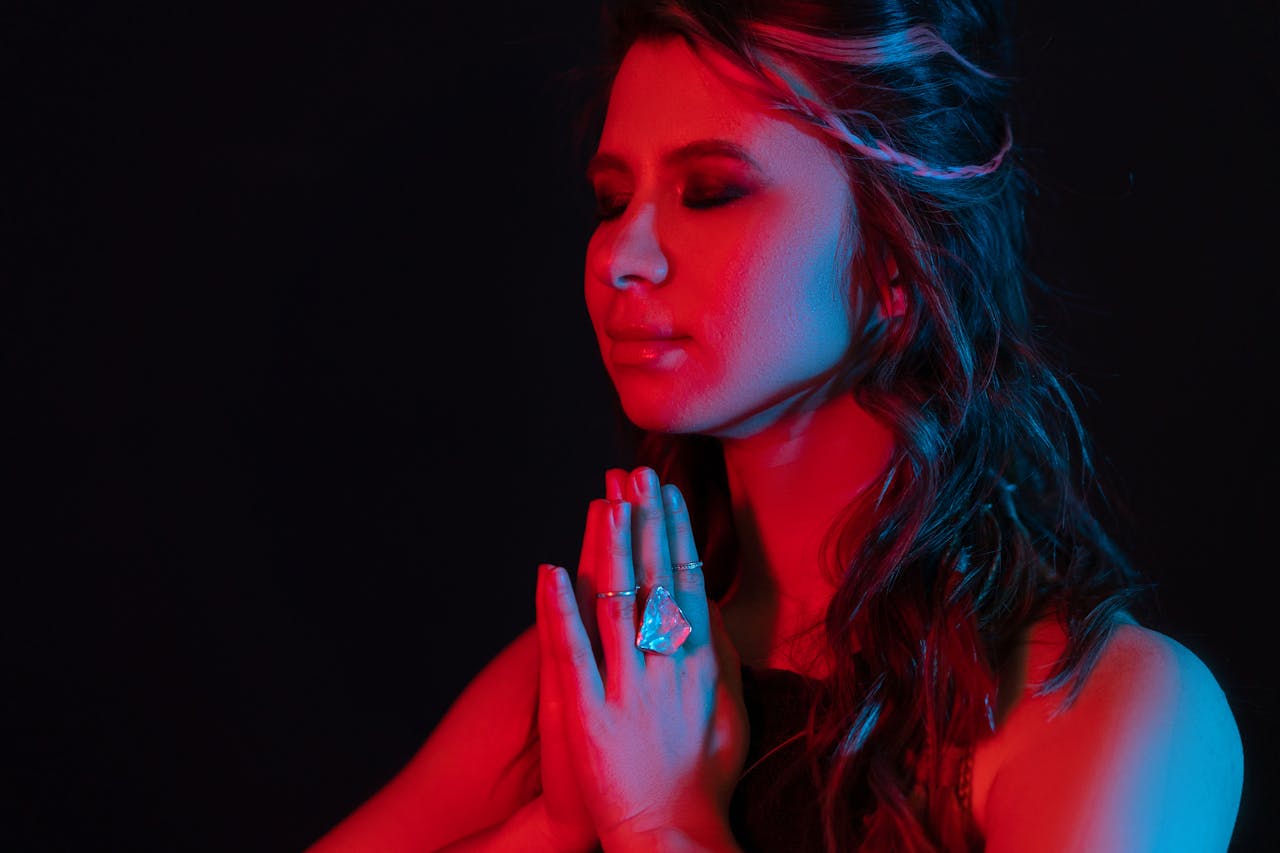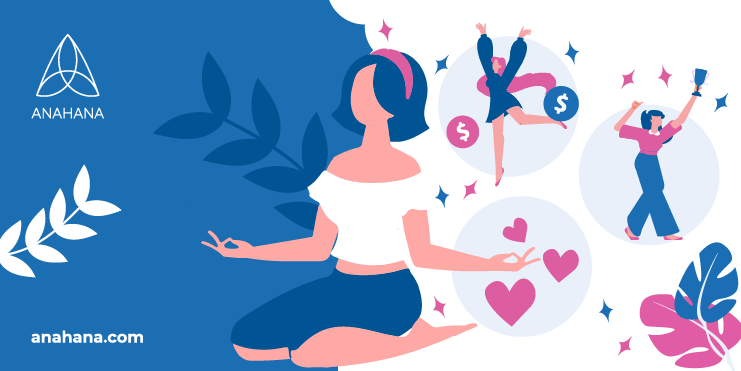
Table of Contents
Explore the transformative practice of visualization meditation with practical insights and a straightforward guide. Elevate your mindfulness journey through the art of visualization meditation.
Visualization Meditation
Among various meditation practices, Visualization meditations use imagination to picture and mentally create vivid images that promote relaxation, concentration, or positive change for a specific outcome.
This may include a specific task one tries to complete, or an achievement one wants to make. The mind concentrates on this vision throughout the visualization exercise while the body relaxes.
The visualization meditation method was first popularized following the 1984 Olympics when Russian Olympians began to use the technique to improve sports performance.
Many athletes, including the most decorated Olympian of all time, Michael Phelps, still use this technique as part of their winning strategy. In an interview with Forbes, Phelps explained that he mentally rehearses competing and winning for two hours daily.
With much research backing up its effectiveness, people now rely on practicing visualization to reach their goals, combat negative emotions, and live happier lives.
How Visualization Meditation Practice Works
There is a science behind this form of meditation. While visualizing, one holds a specific scenario and imagines an outcome becoming a reality.
Incorporating visualization practice into one’s daily meditation can enhance the benefits by allowing people to direct the mind’s eye to a specific result they would like to see. Visualization works by harnessing the power of the mind-body connection to influence mental and physical states.
-
Activating the Nervous System: In visualization, you activate neural pathways in the brain associated with the actions or experiences you are imagining. For example, suppose you visualize yourself performing a skill or activity. In that case, the same brain areas responsible for executing that action are activated, even though you're not physically doing it. By visualizing calming or positive experiences, you can elicit a relaxation response in the body, reducing stress and promoting physical well-being.
-
Enhancing Muscle Memory: Visualization can also enhance muscle memory and motor skills. Studies have shown that mental rehearsal through visualization can improve physical performance by reinforcing neural connections between the brain and muscles, leading to smoother, more coordinated movements.
-
Influencing Emotions: Visualization can influence emotions and mood by activating brain regions associated with emotional processing. Visualizing positive outcomes or experiences can evoke feelings of confidence, joy, and optimism while calming scenes or relaxation imagery can induce a sense of peace and tranquillity.
-
Promoting Healing: Visualization has been used as a complementary therapy in healthcare to promote healing and recovery. By visualizing the body's natural healing processes, individuals may experience reduced pain, improved immune function, and faster recovery from illness or injury.
The Difference between Visualization and Visualization Meditation
Although visualization and visualization meditation rely on mental images, they are different.
-
Visualization: During visualization, the mind does all the work, for example, completing a difficult task while allowing the body to enter a relaxed state. This helps calm performance anxiety, supporting one’s achievements.
-
Visualization Meditation: In contrast, it engages the mind on a mental image that is the object of focus. This may involve visualizing peaceful scenes, healing imagery, or desired outcomes while practicing deep breathing and mindfulness. The goal is to deepen relaxation, enhance focus, and cultivate positive emotions and intentions.
The Benefits of Visualization

Visualization meditation is profoundly beneficial for improving physical and mental health. Some of the many health benefits of visualization that can enhance one’s well-being include:
Physical Pain Relief
The visualization technique can transform brain networks through neuroplasticity. Forming new connections in the brain can allow the mind to view discomfort from a new perspective, helping alleviate chronic pains and migraines.
Boosted Immune System
The mind and the immune system are connected. One study with over 100 men and women found that frequently meditating has a more robust immune response than those who don’t.
Further, visualizing healthy lifestyle habits, including nutrition, sleep, and exercise, will help one commit to practicing these habits, ultimately strengthening the immune system.
Emotional Stability
Visualization is highly beneficial for one’s mental health, reducing stress, anxiety, and depression by focusing on positive thoughts. It has similar benefits to physical exercise, helping one live a happier, healthier life.
Enhanced Focus & Memory
Engaging the imagination through mental imagery effectively enhances cognitive function and improves focus and memory. Ultimately, stress relief clears the mind, allowing us to bring awareness to our daily engagement in the moment.
Visualization Meditation Techniques
Although there are other forms of creative visualization exercises, these five techniques are among the most popular visualization meditation programs:
Color Breathing
When comfortable, begin to focus on your breath. Start imagining a color and what this color represents for you. As you inhale, visualize the color wash over you, filling your body from head to toe. Imagine negative thoughts and emotions draining as you exhale. Continue for five or more minutes.
Goals Visualization
Visualize something you want to achieve. What do you see? What do you feel? What are you experiencing?
After you have visualized the specifics of every aspect, begin viewing this achievement from a broad perspective and watch yourself enjoy this experience. Finish by thinking of what steps you have taken to achieve this goal and what steps you still need to take.
Compassion Meditation
Also called metta or the loving-kindness meditation, the point of this mantra meditation is to help foster good feelings toward themselves, others, and the world around them. Start the process by sitting comfortably and taking some deep breaths.
Imagine yourself in a state of complete peace. Feel a sense of love for all you are and all you have, knowing that it is enough and that you are enough as you are. Breathe in positive feelings of love and breathe out tension and negativity.
Once you feel content, repeat several loving mantras to yourself. You are welcome to choose your own, but some common ones include:
-
May I be safe
-
May I be healthy
-
May I live with ease and happiness
-
May I give and receive appreciation today
Guided Imagery
Begin the guided visualization practice by finding a comfortable position and slowing your breath. Visualize yourself in a calming environment. Use your five-sentence to add detail to your image. Imagine sounds, scents, temperature, and colors.
Your level of calmness is enhanced as you move deeper into the imagery; peace and harmony fill your body as tension exits. When content with your guided visualization meditation experience, you can leave the vision and continue your day.
Progressive Muscle Relaxation
Begin this visualization process by lying on a comfortable surface with your eyes closed and focusing on, and taking deep breath. Begin to tense, then relax a group of muscles, working your way through your body’s muscle groups - optionally, from your toes to your head.
Inhale as you tense the group of muscles and hold for five seconds. As you exhale, relax all muscles and visualize the tension leaving your body. Rest for ten seconds before moving to the next muscle group. This exercise will bring deep relaxation.
Frequently Asked Questions
How do you improve visualization meditation?
People often find it challenging to practice visualization meditation, and it is essential not to give up. Try to engage your senses, not just your imagination and vision, but also touch, feeling, smells, and sounds.
The mindfulness practice takes training, and the more frequently one rehearses, the more skilled, mindful, and confident they will become, and the more benefits they will reap.
Does visualization meditation work?
Yes, the visualization meditation method does work. It trains the body to act well by manifesting what we want for ourselves. On top of visualizing what we want to achieve, we also have to imagine making mistakes to learn to correct them because it is impossible to act perfectly.
Research on mental rehearsal’s effect on balance in older women demonstrates that rehearsing for mistakes allows us to learn to correct them effectively.
How often should I practice visualization meditation?
For best results, practice visualization meditation twice daily for a minimum of twenty minutes. This will give the brain the training to adopt the necessary mindfulness techniques.
References
Less stress, clearer thoughts with mindfulness meditation – Harvard Gazette
https://positivepsychology.com/visualization-meditation/
https://www.wellandgood.com/visualization-meditation/
Meditation: A simple, fast way to reduce stress
Disclaimer
The contents of this article are provided for informational purposes only and are not intended to substitute for professional medical advice, diagnosis, or treatment. It is always recommended to consult with a qualified healthcare provider before making any health-related changes or if you have any questions or concerns about your health. Anahana is not liable for any errors, omissions, or consequences that may occur from using the information provided.

By: Meriah McCauley
Meriah McCauley is passionate about the art and science of holistic health and healing. She explored the power of yoga through working with her mentor and guru Dr. Don Stapleton in Costa Rica. She also received a Masters in Psychology from Columbia University, specializing in Spirituality and the MindBody connection. Meriah now offers coaching, yoga teacher trainings, and Holotropic Breathwork for personal development. She loves to connect with those on this path.
